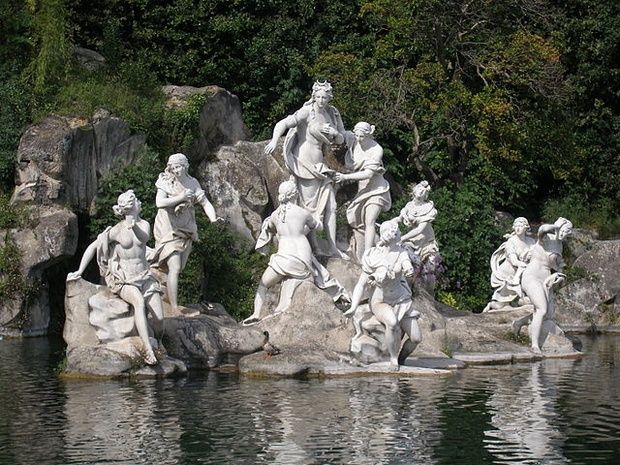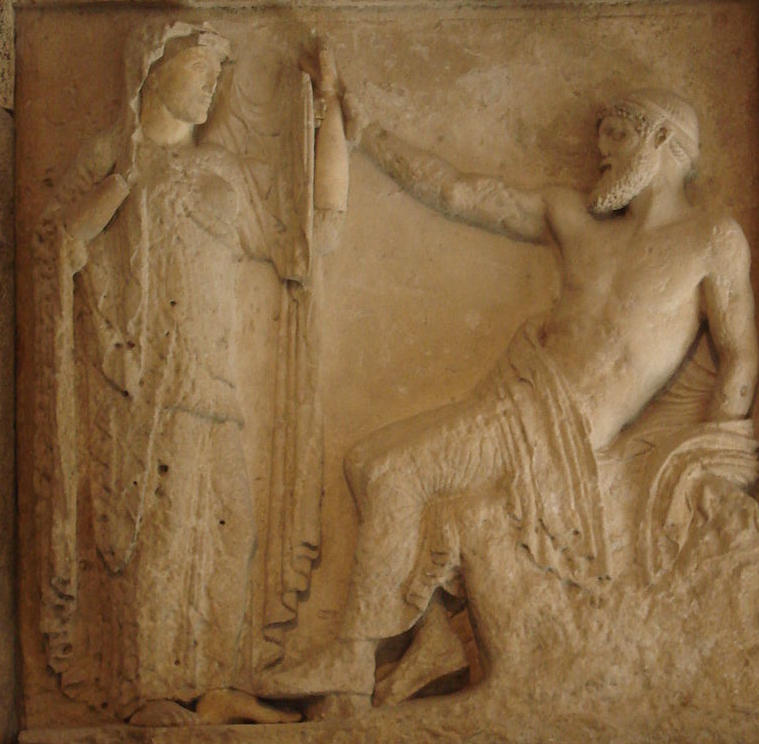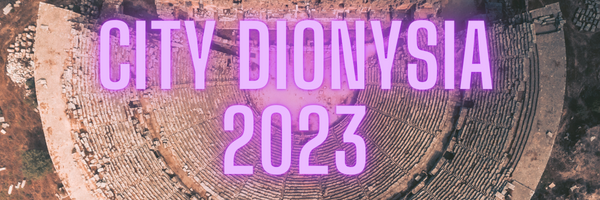Artemis: Where the Wild Girls Are

Give me sixty daughters of Oceanus for my choir – all nine years old, all maidens yet ungirdled; and give me for handmaidens twenty nymphs of Amnisos who shall tend well my buskins, and, when I shoot no more at lynx or stag, shall tend my swift hounds.
Kallimachos of Kyrene, Hymn III to Artemis
The goddesses of the Greek pantheon are a diverse bunch. There are those who decide to get married and become a wife like Hera, goddess of marriage and married women, those who decide to be sexually active without a husband like Aphrodite and Demeter who become mothers outside marriage, and those goddesses who reject both marriage and motherhood like Artemis.
A Sexless Affair?
Both Artemis and her twin brother Apollon are unmarried but unlike him she is never conquered by eros, erotic love. In ancient Greek society, women were associated with nature and men with culture. This is why Artemis is the deity of wildness and wild things, while Apollon is associated with reason and civilisation. But Artemis' eternal maidenhood is not a rejection of sexuality per se. It is a rejection of male domination that is inevitable in sexual intercourse because the ancient Greeks viewed sexuality in terms of domination and submission. The penetrating person was considered to be active and masculine, dominating their partner while the penetrated person was submitting.
The Greek word usually applied to Artemis and translated as virgin is parthenos but there is no perfect equivalent in English. Virginity and youth were aspects of the ideal parthenos but in no way required. A virgin of any age could be a parthenos as well as a woman who was no longer a virgin: Koronis is a parthenos in Pindar's Third Pythian 34 although she is pregnant with Apollon's child. Likewise Kreusa in Euripides' Ion is a parthenos even after she bore the titular child to Apollon. The main focus of the word seems to be "unmarried" rather than "virgin", not a state of sexual experience but a social status.
The Taming of the Parthenos
Undisciplined, licentious, and emotional, women were seen as lacking the self-control of which men were supposedly capable. In particular the parthenos, "childless, unmarried, yet of the age for marriage" is untamed and must be domesticated before it is even possible for a man to carry on a conversation with her (Xenophon, Oeconomicus, 7. 10).
A girl needs to be "tamed" or "broken in" like a filly, as ancient Greek writers put it. Upon reaching maturity the wild girl usually got married and passed from the protection of Artemis to the goddesses of womanhood, Aphrodite and Hera. Marriage marked the end of the domestication process with the parthenos submitting to the yoke of Aphrodite.
Children were wild by their very nature for the ancient Greeks, as Platon writes in both Timaeus (44a-b) and his Laws II (6S3d-e, 666a-e). This description of an Attic festival in Brauron illustrates this as well:
Girls playing the bear used to celebrate a festival for Artemis dressed in saffron robes; not older than 10 years nor less than 5, appeasing the goddess. The reason was that a wild bear used to come to the deme of Phlauidoi and spent time there; and it became tamed and was brought up with the humans. Some maiden was playing with it and, when she began acting recklessly, the bear was provoked and scratched the girl. Her brothers were angered by this and speared the bear, and because of this a pestilential sickness fell upon the Athenians. When the Athenians consulted the oracle [the god] said that there would be a release from the evils if, as blood price for the bear that died, they compelled their virgins to play the bear. And the Athenians decreed that no virgin might be given in marriage to a man if she hadn't previously played the bear for the goddess.
Suidas s.v. Arktos e Brauroniois
So Artemis as a goddess of wildness is not only a huntress and a lady of wild beasts but a patron of wild, untamed girls as well.
Artemis' Retinue
And the maiden faired unto the white mountain of Crete leafy with woods; thence unto Okeanos; and she chose many nymphs all nine years old, all maidens yet ungirdled. And the river Caraetus was glad exceedingly, and glad was Tethys that they were sending their daughters to be handmaidens to the daughter of Leto.
Kallimachos of Kyrene, Hymn III to Artemis
The core of Artemis' retinue is formed by sixty Okeanid nymphs, daughters of Okeanos and Tethys, and twenty maiden daughters of the river god Amnisos, Naiad nymphs from Crete. That's what Kallimachos of Kyrene tells us in his Hymn to Artemis. This group of eighty nymphs was strengthened by mortal maidens like Atalante, Kallisto, and Kyrene. Even young men were allowed to join Artemis, although it remains an exception: Hippolytos, who swore eternal chastity, and Orion were the sole male companions of the Huntress.
Many of the myths around Artemis deal with her wrath but she rarely directs it at those in her retinue who broke their oath of maidenhood, willingly or otherwise. Artemis severely punished Kallisto because she betrayed the goddess trying to hide her pregnancy. She does not, however, seem to begrudge those who leave her retinue to get married like Atalante, Prokris, and Odysseus' mother Antikleia.
"Virgins hunt with me, but you are not a virgin [virgo], leave my company."
Pseudo-Hyginus, Fabulae 189
Prokris was still married to her husband when she approached Artemis about rejoining her retinue and Artemis replies with the words quoted above.
In Latin, the word virgo means a young woman or an unmarried woman but the idea of being (sexually or non-sexually) untouched is also present – as an adjective, virgo can describe a yet unread text, for example.
Several myths show Artemis protective of her maidens. In a version of the Orion myth, the hunter tries to seduce Opis, one of Artemis' followers, and she kills him for it. Another story tells of the river god Alpheios lusting after Arethusa, one of Artemis' nereid attendants. Artemis saves her from assault by transforming her into a spring in Artemis' temple where the goddess was worshipped as Artemis Alpheia.
Worshipping the Goddess of Wild Girls
Artemis is a goddess of wild things: the hunt, wild beasts, and the young of all species. She protects a female child from infancy through all her wild years to the day she becomes a "domesticated" gyne, a married woman dominated by a man. Male children are under the protection of her twin brother Apollon. They wouldn't leave his care upon marriage but upon reaching adulthood once they could grow a full beard.
As the protectors of the children, Artemis is assisted by the Okeanides, and Apollon by their brothers, the Potamoi (rivers). Therefore, girls dedicated a lock of hair to the Okeanides and boys to the local river god, at the coming of age ceremonies celebrated in honour of Artemis and Apollon.
Mothers dedicated richly woven textiles to Artemis after their daughters had successfully experienced menarche and to birth goddesses after a successful childbirth. Family members dedicated beautifully woven dresses to Iphigeneia at Brauron on behalf of women who died in childbirth.
Before the marriage ceremony, the parthenos thanked Artemis for the protection the goddess offered her during childhood by dedicating her maiden clothes, toys, or a lock of hair.
Virgins about to have sex dedicated their virginal lingerie to Artemis.
Suidas s.v. Lysizonos gyne
A girl's first zone or girdle was put on at puberty and later dedicated to Artemis as part of the marriage process. A special zone, tied with a ritual knot, would be worn on the wedding night and untied by the bridegroom.
But marriage wasn't the only time clothes would be offered to Artemis. Mothers dedicated richly woven textiles to the goddess after their daughters had successfully experienced menarche, officially leaving childhood behind.
One of the epithets reflecting her role in the protection and upbringing of a girl from infancy to adulthood is Artemis Kourotrophos. Kourotrophos (Greek: κουροτρόφος, "child nurturer") is a name that the ancient Greeks gave to the gods and goddesses whose role includes the protection of young people. It's not only Artemis who is referred to by this epithet, her brother Apollon, Athena, Hermes, Hekate, Aphrodite, and Eileithyia are also called "child nurturers".
The Etruscan goddess Artumes is associated with the Kourotrophos epithet and rites of passage from roughly 500 BCE onward. Her sanctuary at Veii (modern Portonaccio, Italy) was linked to the rites of passage of girls, since the votive offerings refer to fertility, childbirth, and health.
Even though Ares was said to be their father, the wild, war-like Amazons seem to have mainly worshipped his sister Artemis:
For you, too, the Amazons, whose mind is set on war, in Ephesos beside the sea established an image beneath an oak trunk, and Hippo [an Amazon Queen] performed a holy rite for you, and they themselves around the image danced a war-dance – first in shields and armour, and again in a circle arraying a spacious choir.
Kallimachos of Kyrene, Hymn III to Artemis
After the dance, the Amazons raised a shrine around the image, the famous Temple of Artemis in Ephesos, that would "easily outdo" Apollon's temple in Delphi. In fact, it would become one of the Seven Wonders of the World.
Addendum
I want to add an interesting reader question: If women were considered to be wild before marriage, would that ever overlap with, say, Dionysos' maenads?
Dionysos is known to turn even "domesticated" wives feral with his madness but his maenad followers are both married and unmarried:
"Maenads leave home where they resist men, become like animals, and perform sacrifice. Hence the frequent association of Artemis with Dionysos. [...] They go rather to reject the men of their own household and polis. Accordingly, the Dionysiac thiasos contains married as well as unmarried women, whose departure disrupts the household in different ways. [...] In the Bacchae, the Theban maenads are compared to fillies that have LEFT the yoke."
"Tragedy, Ritual and Money in Ancient Greece: Selected Essays" by Richard Seaford: Dionysos as Destroyer of the Household
Thank you for bearing with me and supporting the time and effort that I put into these articles, especially my sexy demigoddesses Jane, Linda, and Vendice, and my lovely nymphs and satyrs David, Ellis, Evan, KJ, Malpertuis, Max, Sarah, Suda, and Wirebiter. May Artemis grant you a little wildness, no matter your stage in life 🏹
Sources
Title image: Diana Caserta, 18th century sculpture group in the Royal Park of the Palace of Caserta, Italy
Hymn III to Artemis by Kallimachos of Kyrene, translation by A. W. Mair
From Artemis to Diana. The Goddess of Man and Beast, Museum Tusculanum Press, 2009
Classical Mythology by Elizabeth Vandiver
Bound to Bleed ‒ Artemis and Greek Women by Helen King
Arktos e Brauroniois in Suida Lexicon, Suda On Line
Dress, Gender and the Menstrual Culture of Ancient Greece by Amy Pence-Brown
On the word parthenos see Nicole Loraux 1993:162 "The Children of Athena" and Giulia Sissa 1990a "Maidenhood without Maidenhead: The Female Body in Ancient Greece"
Citations in history papers are a fucking pain!



